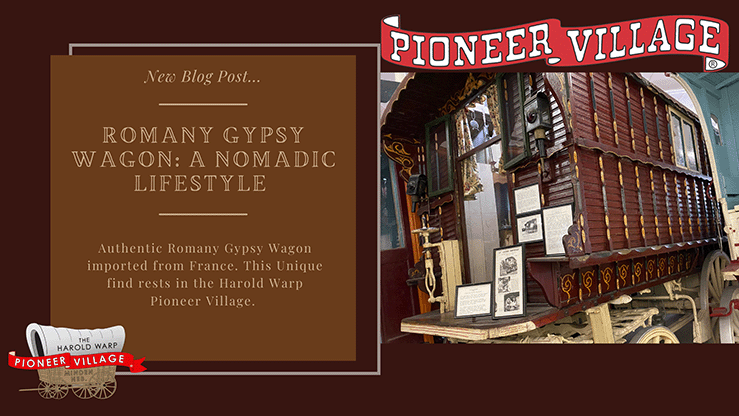
The Romany or Roma people have a rich history originating in Northern India. This group of people also have ties to Egyptian ancestry. Over a course of 500 years the Romany people would travel from Northern India, Egypt, Spain, and to the British Isles. It was common for this group to work in these areas as: coppersmith, peddlers, horse/livestock traders, and even fortune tellers. They were known to be “condemned to wander the earth”, since they lived life on the road. In modern times Romany people do not commonly travel like their ancestors.
Before the age of tiny homes and RVS, Romany Travelers used wagons to live a more nomadic life. To achieve such a lifestyle, wagons were used as a mobile home as well as a place to conduct business. Theses wagons used by the Romany were referred to as ‘vardos’. Like many homeowners Romany’s commissioned someone to build a wagon, costing anywhere from 50 to 150 Euros. Much like modern society, new (wagons) homes were commissioned to often times celebrate a new child or even becoming newlyweds. How ornate the wagon signified how wealthy one was. Most commonly wagons were equipped with a stove, storage, and sleeping quarters. These wagons were intended to be drawn by horses. There are 6 main styles of wagons used by travelers which include: the Brush, Reading, Ledge, Bowtop, Openlot, and the Burton style. Harold Warp’s Pioneer Village currently owns one that resembles the Ledge style of wagon. The Ledge style most notably has a cottage shape design as well as a spacious living area.
Back in the day Romany people were oftentimes referred to as Gypsies. Today there are many debates on which is the correct term to call this group of people. After doing some research, most Roma people would prefer to be called Romany or Travelers. Gypsy is a more archaic term which can easily be replaced with Romany.
Harold Warp Pioneer Village is notorious for its expansive collection on wagons and carriages. Harold was looking for an authentic Romany Wagon but was having little success finding one in the United States. Around 1953 the opportunity arose to purchase the wagon. A woman in France sold the wagon to the museum for $250 dollars. In letters exchanged by the founder Harold Warp and his sister Clara, discussed the importance of finding an authentic wagon from the 1850’s with all the ornate features. Harold was specifically interested in what kind of condition the traveler wagon would arrive in and if it had original pieces including brass railings. Due to the time period, it took over a year for the wagon to be acquired by Pioneer Village.
Harold Warp Pioneer Village is one of the few museums with an authentic Gypsy Wagon. European Traveler tradition suggests that wagons were burned once someone passed on. Not many made it from this time period as well as having original pieces. Making it remarkable to have an intact traveler wagon at Pioneer Village. This museum has a plethora of unique artifacts that sets it aside from any other attraction in Nebraska. Check out the Harold Warp Pioneer Village to discover local and international history.
Romany Gypsy Wagon
References:
1. 6 main styles of wagons: https://www.qualityunearthed.co.uk/blog/the-history-of-the-gypsy-wagon/
2. Gypsies: https://www.britannica.com/topic/Rom
3. ‘vardos’ : https://en.wikipedia.org/wiki/Vardo_(Romani_wagon)
4. rich history: https://www.britannica.com/topic/Rom
5.tradition: https://livingwithdying.leeds.ac.uk/2018/01/30/a-lost-caravan/

Recent Comments